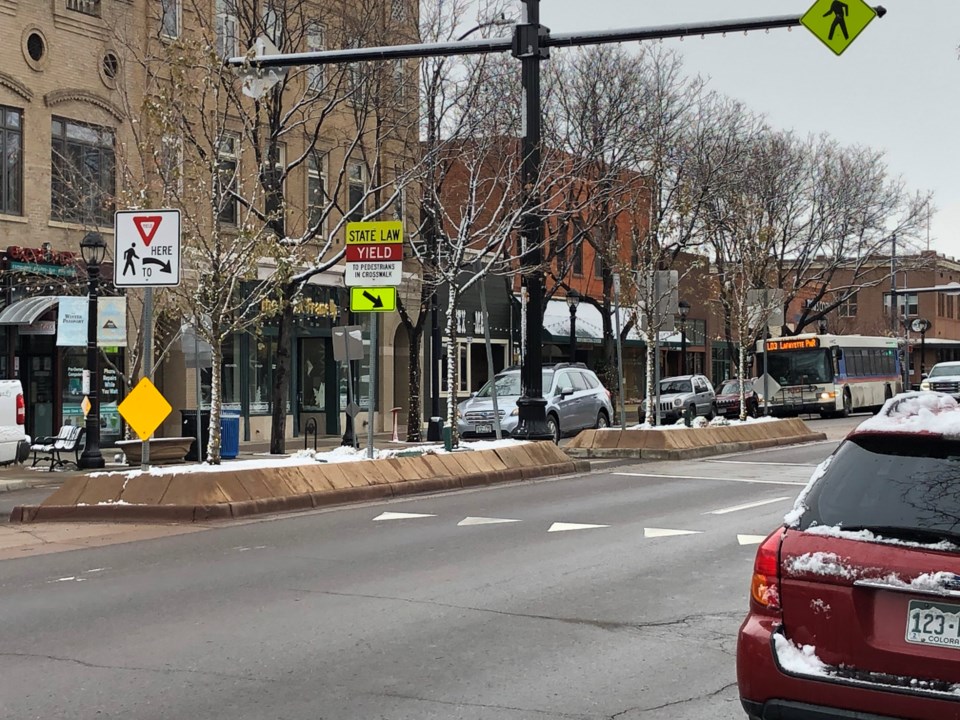The city of Longmont is running a heat mapping study and will seek the public's help.
In support of the city's Sustainability Plan and Climate Action Recommendations Report, study will use a data collection protocol developed by Climate Adaptation Planning + Analytics Strategies, or CAPA Strategies, to measure air temperature and humidity along predetermined routes in Longmont.
“This will give us a very detailed map of heat around the city based on air temperature, not surface temperature which is already available via satellite remote sensing,” said Zak Lance, sustainability coordinator for the city of Longmont.
Volunteers for the heat mapping project will attach specially designed sensors to their vehicles and drive a roughly hour-long, predetermined route through Longmont. Temperatures along these routes will be measured at three different times; 6 a.m., 3 p.m. and 7 p.m.
The sensors collect data every 1 second along the route and are later compiled to create a map of the heat island effect around the city. Heat islands occur in urban areas when structures such as buildings, roads and other infrastructure absorb and re-emit the sun’s heat, according to the United States Environmental Protection Agency.
The project has been conducted in over 60 U.S. cities, including Boulder. This year, the city of Longmont is working alongside Tucson, Salt Lake City and Portland to share best practices and offer support for one another, Lance said.
Once the community science project has ended, CAPA Strategies will produce a report with a set of high-resolution air temperature and humidity data along with an analysis of the distribution of heat in the morning, afternoon and evening.
The Heat Watch project is slated for July 15, however, the weather of the day will determine if the project is pushed to its alternate date of July 22. City staff are working with a weather forecast officer at NOAA’s Boulder office to determine if the perfect conditions will be met for the day. The project requires clear skies, no rain, low wind and a high temperature of at least 89F.
The city is still looking for volunteers to drive or navigate on the day of the project. Volunteers can register by visiting the city's volunteer website or calling Lance at 303-774-3553.
Volunteers can choose to register for one, two or all three time slots. They must also attend a training session on July 5. All volunteers need to be 18 years old or older and sign a liability waiver. Drivers will also need a reliable vehicle, a valid driver's license, automobile insurance and pass a driving record check.
In addition to collecting data, Longmont residents will be asked to participate in surveys, interviews and possibly focus groups. These community engagement opportunities will be available to all Longmont residents, however, the city will conduct deeper engagement in the Lanyon, Kensington and Mountain View neighborhoods.
“Our previous Climate Risk and Vulnerability Mapping work identified those areas as most at-risk for extreme heat given their social, economic, and built environment characteristics,” Lance said.
All information will be provided in both English and Spanish.
Once all the data is collected the city will decide which cooling solution best suits the neighborhoods and the people that need the most support, Lance said. Some solutions could include planting trees for shade, exploring the installation of splash parks, “cool pavement” coatings, air conditioner or heat pump discounts or rebates and more.
“We’re doing this because we’ve identified extreme heat as the biggest climate risk facing Longmont. This will help us better understand street-level heat risk and develop ideas for potential solutions as our climate continues to warm due to climate change,” Lance said.



